Many people, even those not involved in design, have heard of the Provence style in interior design. However, not everyone can distinguish it from classic style, choose the right furniture, and even properly decorate a room. Despite this, it is filled with incredible romance and the charm of French villages, which can bring life even to the bleakest apartments. Our tips will help you with this!
Features of the Style
The Provence style originates from France, specifically the regions often overlooked by those who only visit the capital. One glance at the sprawling lavender fields, refreshing turquoise shores, and boundless blue skies instantly clarifies the inspiration behind Provence interior’s vibrant pastel tones, subtle patterns, smooth lines, and love for natural elements.
While Provence may share similarities with classic style, the resemblance can lead to confusion among those unfamiliar with the nuances. Don’t mistake its rural origins as provincial. Provence’s simplicity imparts a sense of comfort, and its sophistication stems from understated luxury and elegance.
The style embraces space and freedom, making it less suitable for smaller areas. In compact spaces, it might be better to adopt another style or only incorporate a few Provence elements, simplifying the overall design. Ideally, you should aim to decorate all rooms in an apartment or house in a cohesive theme, forming a unified composition.
When creating your design plan, lean towards a light, pastel palette that prominently features white. This palette can contain a blend of pink, lettuce green, lavender, and blue shades, perhaps “seasoned” with various patterns or the texture of natural materials. These natural materials are mandatory in the Provence style, which inherently rejects artificial alternatives due to its roots in the enchanting French countryside.
Furniture in the Provence style should exude classic elegance and beauty, often adorned with white paint. True to the style’s principles, you should primarily fill the space with antique pieces, ideally sourced from auctions. However, not everyone can afford such extravagance. To circumvent excessive costs, you can buy necessary Provence-style furniture at a flea market or commission pieces from a craftsman, utilizing the effect of artificial aging.
To create a cozy atmosphere in the interior, there should be as many details as possible – that’s why a large area is an important requirement. Drawings, figures, wrought elements, soft fabrics, and of course, plants – the perfect combination for Provence. The finishing touch to this composition will be a abundance of natural light.
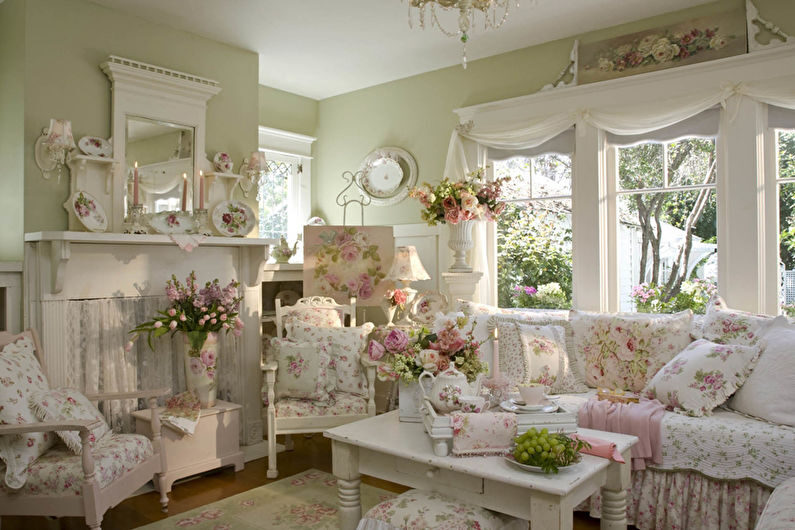
Finishing and Materials
But before filling the room with items, it is necessary to create the right layout for them. Provence, although a simple style, sets clear rules for each part of the space.
Flooring
The flooring for a Provence-style interior should be wooden, with a painted finish. Ideally, there should be small but safe imperfections or defects from the effects of time present on the surface.
If the authentic option doesn’t suit your needs, choose a more budget-friendly laminate that mimics wood. It may not look as impressive, but you can draw attention away from the floor by covering it with a rug.

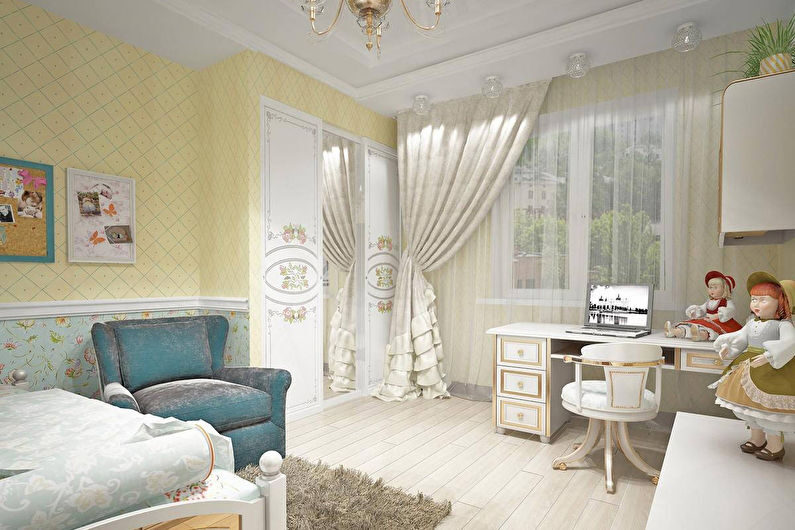
Walls
You can also embrace imperfections in interior partition walls – like bumps, wear, and exposed brickwork – as long as they maintain a tidy appearance. Such surfaces typically receive a coat of light, often white, paint.
The best materials for wall finishes in this style include gypsum, plaster, or molding. Wallpaper fits the Provence aesthetic as well, especially when it features floral ornaments.

Ceiling
Exposed ceiling beams can be left as is and become a highlight of the Provencal interior. But if there are no such elements in your home, a smooth white surface with an elegant chandelier would be the ideal option.

Furniture in the Provence Style
Furniture in the Provence style carries a sense of history, celebrating the beauty of classical antiquity. Primarily, we see wooden and occasionally woven furniture, often adorned with forging elements. These pieces typically have a paint finish in white or pastel shades, revealing a rustic, worn texture beneath. Floral patterns may decorate the furniture either as drawings or upholstery.
In Provence style, the furniture set extends beyond standard life necessities. Essential items include low dressers, sideboards, and elegant servers. The style favors sturdy, legged pieces that seem to sag under their own weight, adding character not just to the living room but throughout the house. Small sofas and stools scattered across the home emphasize the importance of leisure and appreciative observation of the surrounding beauty.
Traditionally, wrought iron details enhance beds, but they can also serve for staircases or smaller items like lamps. However, they shouldn’t evoke a sense of grandeur; instead, they should convey French whimsy.

Textiles and Decor
The most interesting part of design that brings life to a Provencal interior is decorative details. Although they are limited by standard rules for the style, the versatility of their application is even enchanting for experienced designers.
First of all, the curtains are light, airy, and do not obstruct natural light. Depending on the room and window size, you can buy classic, Austrian curtains, or “café” curtains. The material plays an important role here – cotton, linen, something natural is always necessary.
The fabric can be solid, in “flowers” or “checks”, but this choice must harmonize with the interior. Approximately the same criteria are applied to bedding.
Art lovers can fill the room with their collections of Impressionist or Realistic paintings – they will look appropriate here. Elegant gilded frames will stand out brightly in a pastel Provence.
Classical fragile chandeliers and candelabra will help create a romantic atmosphere. And don’t forget about mirrors with wooden frames.
Numerous shelves, tables, and side tables can be decorated with cute trinkets: painted vases, boxes, photos, all kinds of statues, or coasters. The main thing is to stop in time, not overloading the composition.


Provence in Interior Design — Photos
Although the aforementioned rules are universal, the decoration of an interior in the Provence style will vary slightly depending on the type of room. But a few tips and photos will definitely give you a great idea!
Kitchen Design in Provence Style
A Provence-style kitchen is spacious, bright, and often combined with a dining area. The cooking area is separated from the dining area by a countertop or an island bar. Designers have a difficult task ahead of them, as they must harmoniously integrate household appliances into a classic, rural interior so that they do not look out of place. To achieve this, modern items are often hidden in cabinets or disguised as antique ones.
When choosing dishes and other kitchen accessories, keep in mind that they, being on display, are part of the decor. Decorative plates, wooden spoons, or herb jars will look very cozy. Small windows are best dressed with curtains.







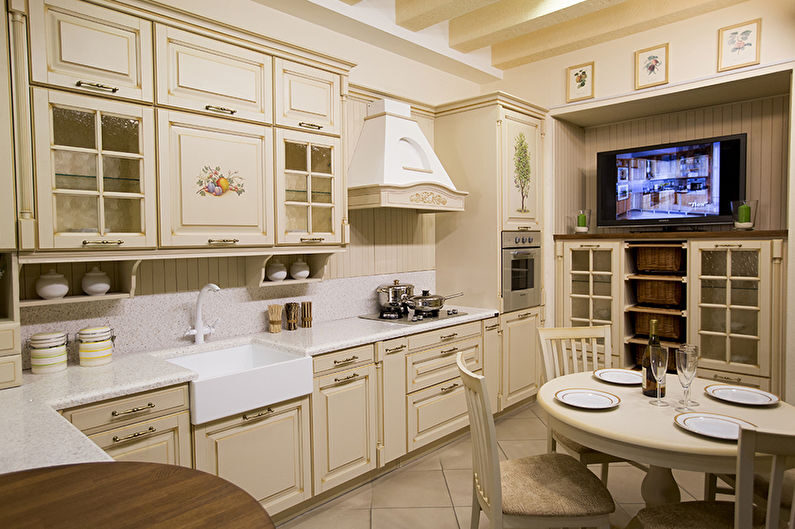







Designing a Provence-style Living Room
A traditional living room typically includes a sofa, a few chairs, a coffee table, a wall unit, and, if space permits, ottomans or side tables. This type of furniture arrangement assumes that you will spend time reading books and maybe even knitting, in addition to watching TV.
Speaking of TV, it may not be possible to hide it, but you can choose a minimalist model that won’t draw too much attention.
A small rug with a braided texture, lamps, and pots with plants will look appropriate.




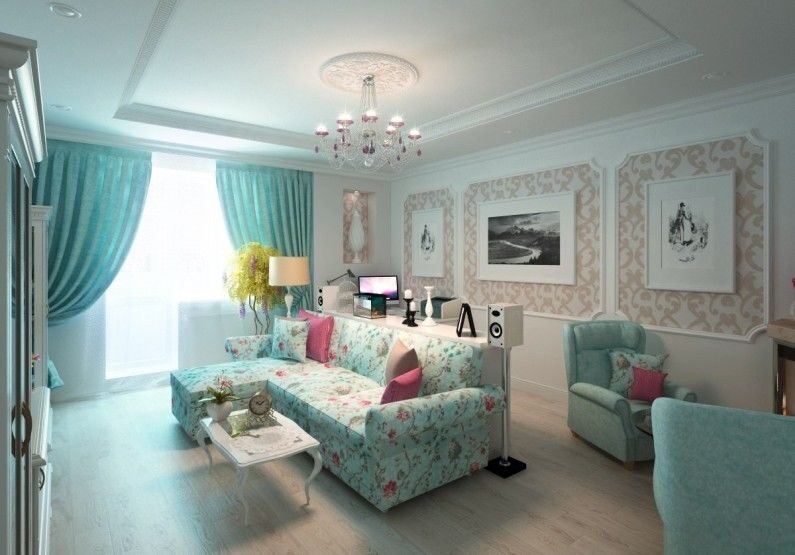





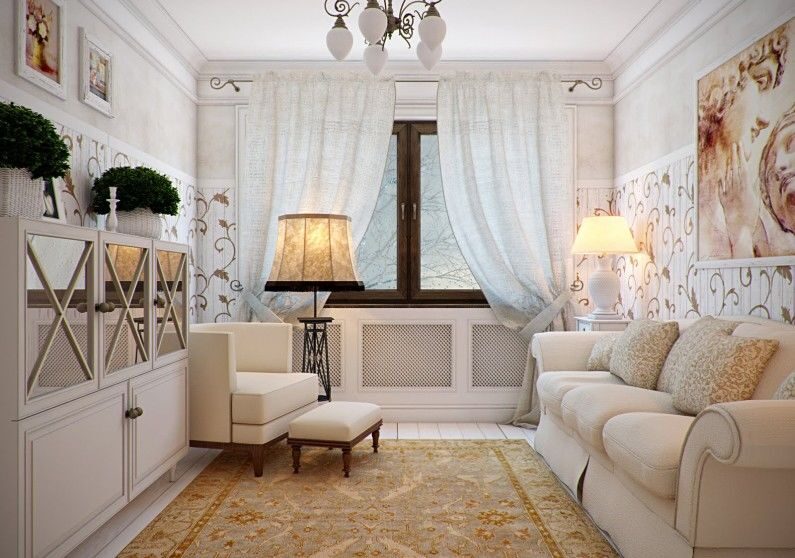



Design of a Provence-style Bedroom
A bedroom, as a place of rest, can be furnished with fewer items. An authentic Provence look is a bed with a wrought iron headboard, painted white and made up with white linens. For variety, the textiles can have a floral pattern or lace inserts.
A low chest of drawers opposite the bed will fit well in a large bedroom. Girls can treat themselves to a vanity table. Airy classic curtains will complete the overall composition.






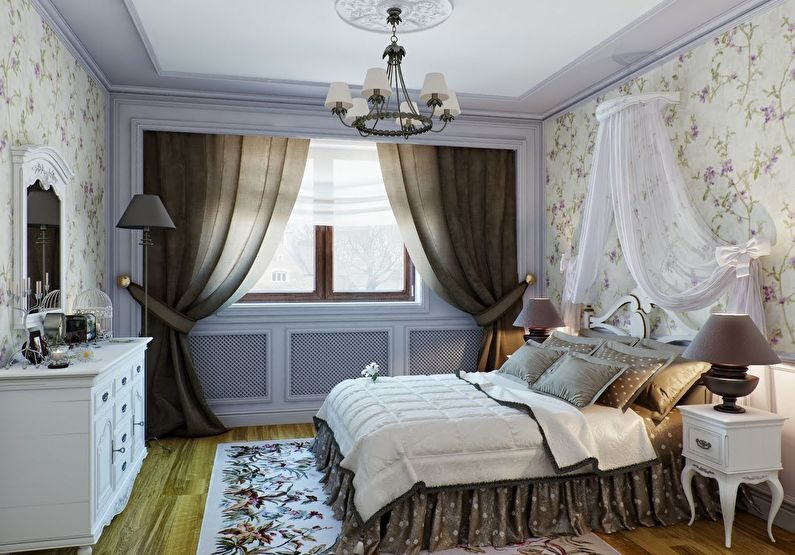





Designing a Provence-style Bathroom
A traditional bathroom in the Provence style is a work of art, and while you can make do with limited space in other rooms, here you simply can’t.
In apartments, having a window in the bathroom, although not always practical, is an essential feature. It facilitates a connection with nature, crafting a more organic setting for personal care routines. This link to nature is further reflected through the use of natural materials, despite the high humidity typical of the room.
Ceramic tiles, preferably matte, can be used to finish the lower part of the walls. The remaining surface can feature decorative plaster or painted brickwork.
In loft style bathrooms, homeowners often consider a traditional freestanding bathtub as a mandatory element, and usually choose to exclude a shower cabin. Beyond these aspects, they can customize the room’s contents to fit their needs.











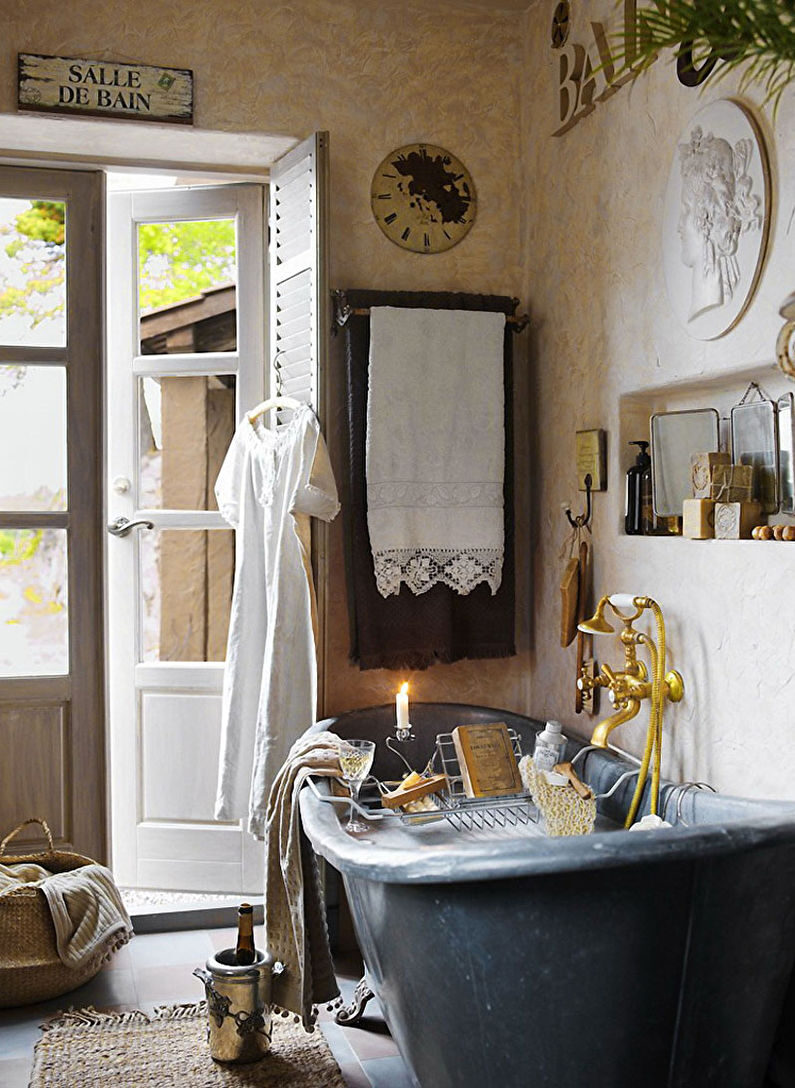


Designing a child’s room in a Provence style
A Provence-style child’s room is perfect for both little girls and teenagers. Who wouldn’t want a fairytale-like bedroom? A soft color palette, soft fabrics, floral patterns, and well-made furniture will guarantee a happy childhood.
For boys, it is also possible to create a suitable space, if a consistent style is desired throughout the home. A blue or green color scheme combined with cool tones should be selected. Plaid textiles can add variety to the monotony, and a more reserved design for the furniture will give the room a strict character.
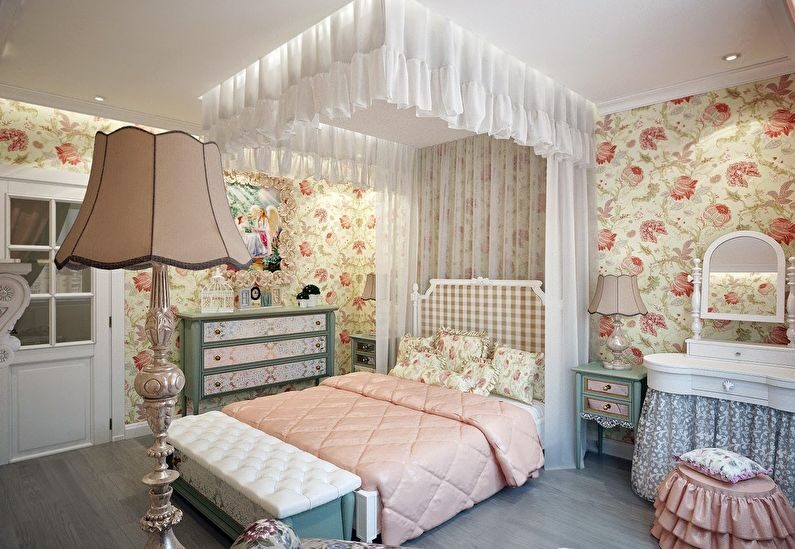








Designing a hallway in a Provence style
The hallway is a room that greets guests and creates the first impression of the house. Therefore, it is essential to create the necessary atmosphere even in this non-residential space.
It is best to use darker colors for the finish and furniture, otherwise street dirt will quickly stain the “pastel delicacy”. Even if it does not match the style, to save space, a mirrored wardrobe can be incorporated.
For practical purposes, it’s advisable to keep decor to a minimum in a Provence style hallway.
Don’t be afraid to install more light sources, as natural lighting rarely reaches the hallway area.



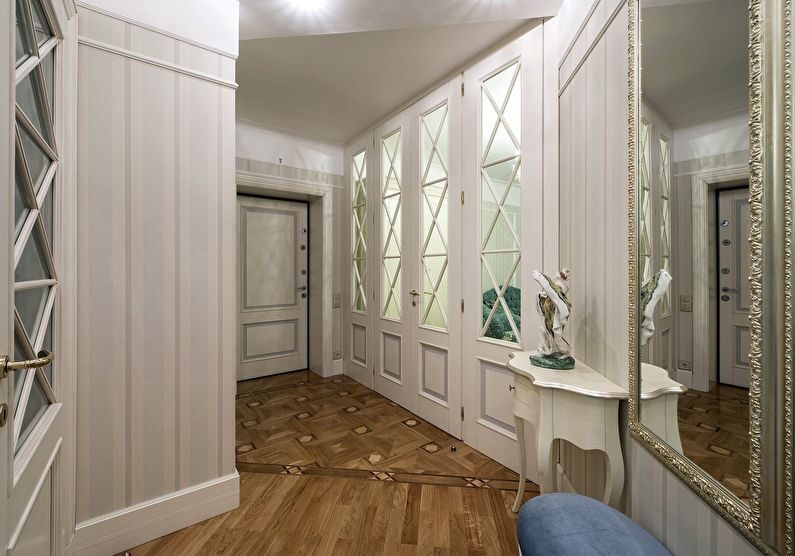

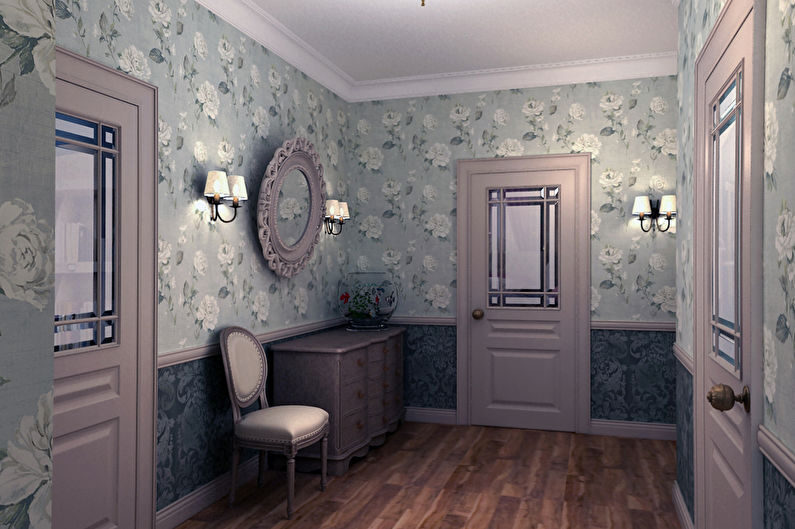









Leave feedback about this